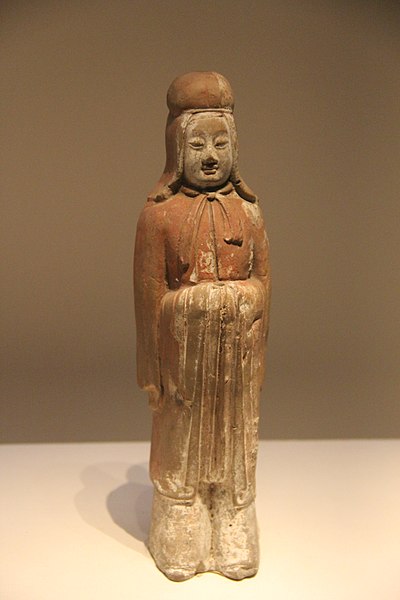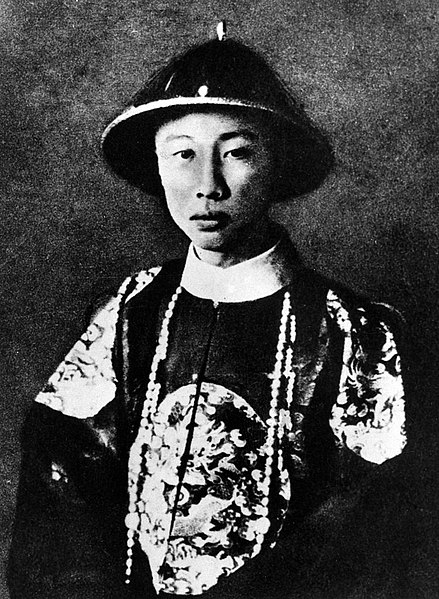The Jin dynasty or the Jin Empire, sometimes distinguished as the Sima Jin (司馬晉) or the Two Jins (兩晉), was an imperial dynasty in China that existed from 266 to 420. It was founded by Sima Yan, eldest son of Sima Zhao, who had previously been declared the King of Jin. There are two main divisions in the history of the dynasty. The Western Jin (266–316) was established as the successor to Cao Wei after Sima Yan usurped the throne from Cao Huan and took the title of Emperor Wu. The capital of the Western Jin was initially in Luoyang, though it later moved to Chang'an. In 280, after conquering Eastern Wu, the Western Jin ended the Three Kingdoms period and reunited China proper for the first time since the end of the Han dynasty.
Western Jin-era porcelain figurine
Yue ware with motif, 3rd century CE, Western Jin, Zhejiang.
Pottery tower, Western Jin, 265–317 CE.
Celadon lion-shaped bixie, Western Jin, 265–317 CE.
For most of its history, China was organized into various dynastic states under the rule of hereditary monarchs. Beginning with the establishment of dynastic rule by Yu the Great c. 2070 BC, and ending with the abdication of the Xuantong Emperor in AD 1912, Chinese historiography came to organize itself around the succession of monarchical dynasties. Besides those established by the dominant Han ethnic group or its spiritual Huaxia predecessors, dynasties throughout Chinese history were also founded by non-Han peoples.
A depiction of Yu, the initiator of dynastic rule in China, by the Southern Song court painter Ma Lin.
A photograph of the Xuantong Emperor, widely considered to be the last legitimate monarch of China, taken in AD 1922.
Image: Han Guangwu Di
Image: Liu Bei Tang








